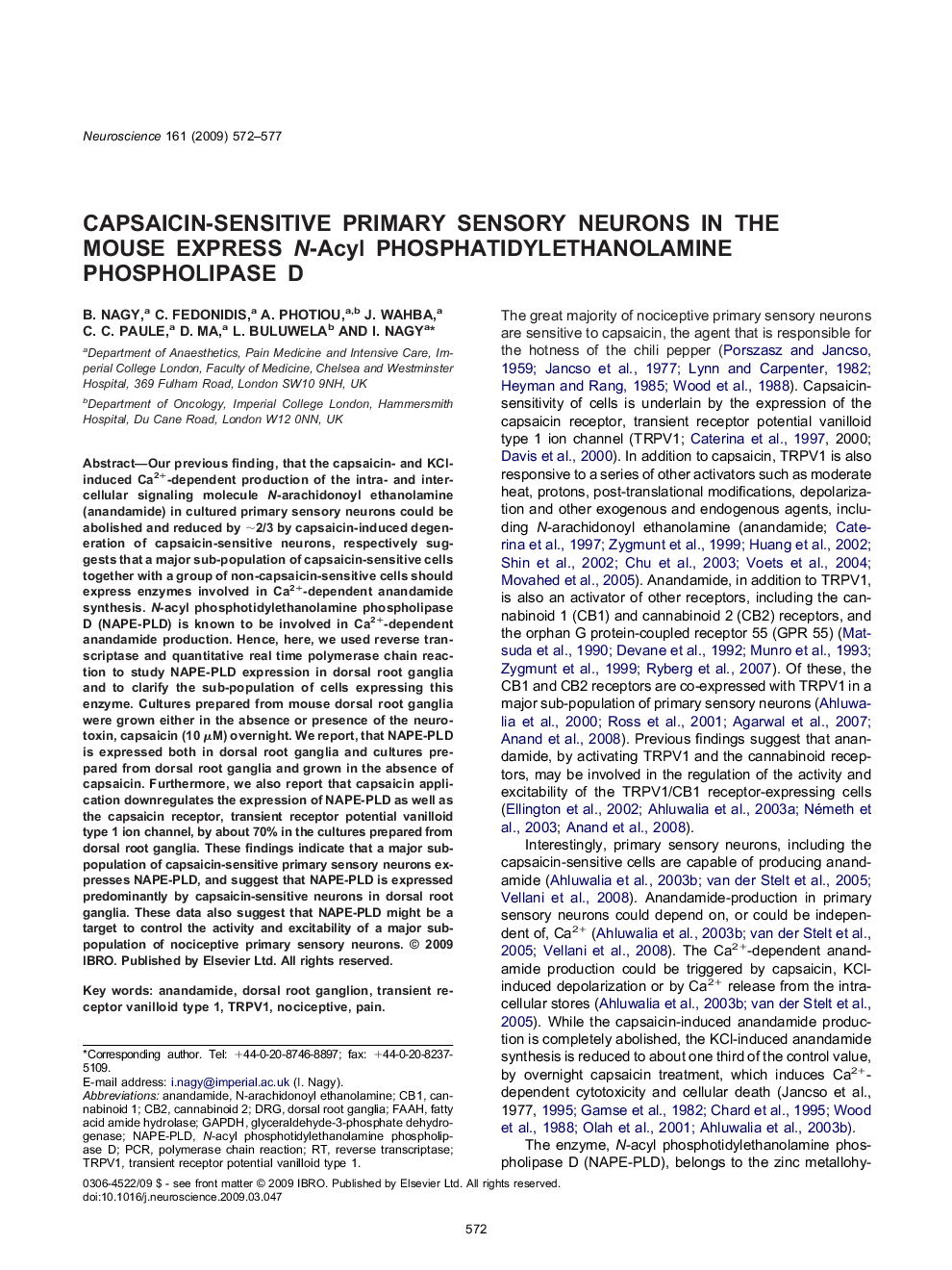| Article ID | Journal | Published Year | Pages | File Type |
|---|---|---|---|---|
| 6278218 | Neuroscience | 2009 | 6 Pages |
Abstract
Our previous finding, that the capsaicin- and KCl-induced Ca2+-dependent production of the intra- and intercellular signaling molecule N-arachidonoyl ethanolamine (anandamide) in cultured primary sensory neurons could be abolished and reduced by â¼2/3 by capsaicin-induced degeneration of capsaicin-sensitive neurons, respectively suggests that a major sub-population of capsaicin-sensitive cells together with a group of non-capsaicin-sensitive cells should express enzymes involved in Ca2+-dependent anandamide synthesis. N-acyl phosphotidylethanolamine phospholipase D (NAPE-PLD) is known to be involved in Ca2+-dependent anandamide production. Hence, here, we used reverse transcriptase and quantitative real time polymerase chain reaction to study NAPE-PLD expression in dorsal root ganglia and to clarify the sub-population of cells expressing this enzyme. Cultures prepared from mouse dorsal root ganglia were grown either in the absence or presence of the neurotoxin, capsaicin (10 μM) overnight. We report, that NAPE-PLD is expressed both in dorsal root ganglia and cultures prepared from dorsal root ganglia and grown in the absence of capsaicin. Furthermore, we also report that capsaicin application downregulates the expression of NAPE-PLD as well as the capsaicin receptor, transient receptor potential vanilloid type 1 ion channel, by about 70% in the cultures prepared from dorsal root ganglia. These findings indicate that a major sub-population of capsaicin-sensitive primary sensory neurons expresses NAPE-PLD, and suggest that NAPE-PLD is expressed predominantly by capsaicin-sensitive neurons in dorsal root ganglia. These data also suggest that NAPE-PLD might be a target to control the activity and excitability of a major sub-population of nociceptive primary sensory neurons.
Keywords
Related Topics
Life Sciences
Neuroscience
Neuroscience (General)
Authors
B. Nagy, C. Fedonidis, A. Photiou, J. Wahba, C.C. Paule, D. Ma, L. Buluwela, I. Nagy,
